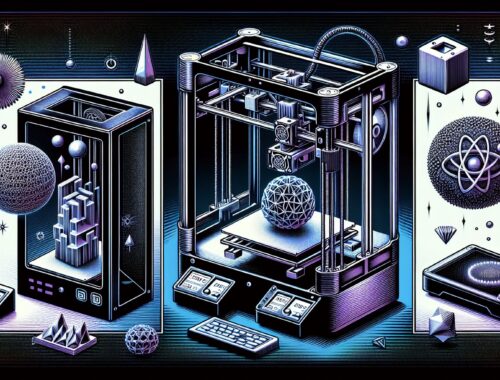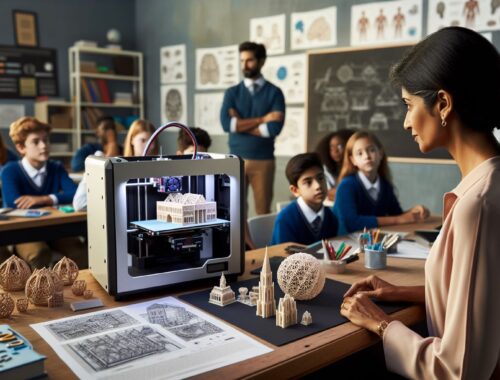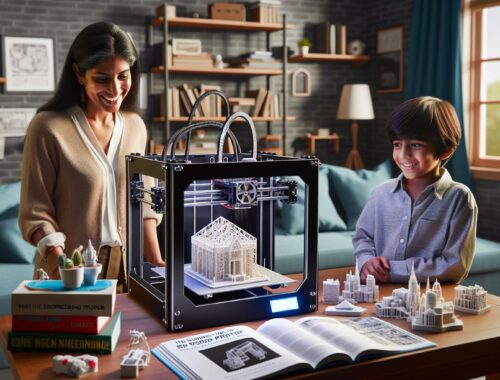The Benefits of 3D Modeling and 3D Printing for College Students
Introduction
In recent years, 3D modeling and 3D printing have emerged as revolutionary technologies that have transformed various industries, including manufacturing, product design, and even healthcare. These technologies have also found their way into educational institutions, offering college students exciting opportunities to explore their creativity, enhance their learning experience, and acquire practical skills. In this article, we will delve into the world of 3D modeling and 3D printing, exploring how these technologies can benefit college students in various fields of study.
The Power of 3D Modeling
Enhancing Understanding and Visualization
3D modeling provides college students with a powerful tool to enhance their understanding of complex concepts and visualizing abstract ideas. In various disciplines, such as architecture, engineering, and biology, students can create 3D models that replicate real-world structures, organisms, or processes. By manipulating and examining these models from different angles, students can gain a deeper understanding of the underlying concepts and improve their spatial reasoning abilities.
Accelerating Toy Creation and Prototyping
Creating toys has always been an exciting way for college students to explore their creativity and develop new skills. With 3D modeling, students can unleash their imagination, designing and customizing their own unique toys. Once the digital model is complete, it can be sent to a 3D printer for manufacturing. College students can bring their designs to life, creating tangible prototypes they can touch and play with, fostering innovation and entrepreneurial thinking.
Building Architectural and Engineering Models
Architecture and engineering students can greatly benefit from 3D modeling and printing when it comes to creating accurate models of complex structures. Instead of relying solely on drawings and diagrams, students can use software tools to create intricate 3D models of buildings, bridges, or industrial equipment. These models can then be printed using a 3D printer, allowing students to examine the physical representation of their designs and gain valuable insight into the challenges involved in construction and engineering.
The Revolutionary Potential of 3D Printing
Prototyping and Product Development
In addition to its usefulness in toy creation, 3D printing offers tremendous potential in prototyping and product development. College students studying industrial design, product development, or entrepreneurship can utilize 3D printers to rapidly produce prototypes of their ideas. This enables them to iterate on their designs quickly, uncover potential flaws, and refine their products before venturing into full-scale production. The speed and cost-effectiveness of 3D printing can significantly reduce barriers to innovation, empowering students to bring their ideas to market sooner.
Manufacturing and Creating Functional Products
Not limited to prototyping, 3D printing technology has advanced to the point where it can be used for manufacturing functional products. College students have the opportunity to design and fabricate intricate objects with moving parts, customized to meet specific needs. For example, engineering students can create bespoke medical devices or robotics components, while art students can produce intricate jewelry pieces. With 3D printing, the only limitation is one’s imagination, providing a unique platform for interdisciplinary collaboration and innovation.
Exploring Entrepreneurial Ventures
With the accessibility and affordability of 3D printers, college students can leverage this technology to embark on entrepreneurial ventures. By combining their creativity, design skills, and knowledge from their respective fields, students can develop and manufacture innovative products using 3D printers. This not only allows them to gain real-life experience in product development and manufacturing but also opens doors to potential business opportunities. The ability to create small batches of products on-demand reduces startup costs, enabling students to test the market, receive feedback, and refine their offerings before scaling up.
Conclusion
The integration of 3D modeling and 3D printing into college curricula has transformed the way students learn and create. Whether it’s enhancing understanding and visualization, accelerating toy creation and prototyping, building architectural and engineering models, or exploring entrepreneurial ventures, 3D modeling and 3D printing provide endless possibilities. As these technologies continue to evolve, it is crucial for educators and students alike to embrace them, harness their power, and leverage the unique opportunities they present. By doing so, college students can acquire essential skills, foster innovation, and prepare themselves for the dynamic and ever-changing professional landscape of the future.
You May Also Like

The Top 3D Printer Brands for College Students Who Want to Avoid 3D Printing Disasters
March 14, 2024
Exploring the World of 3D Printing: A Guide for Educators
May 8, 2024
